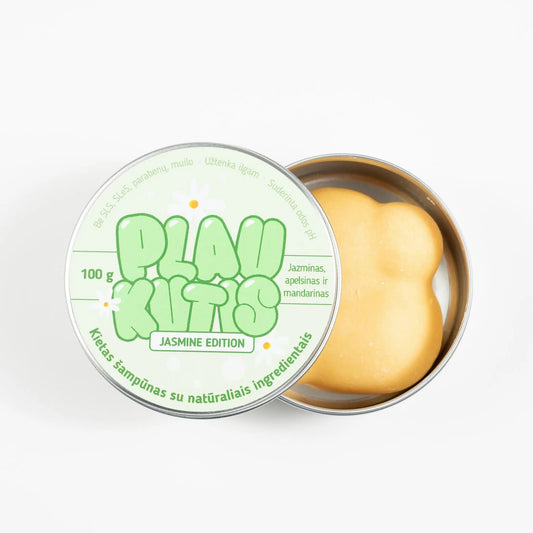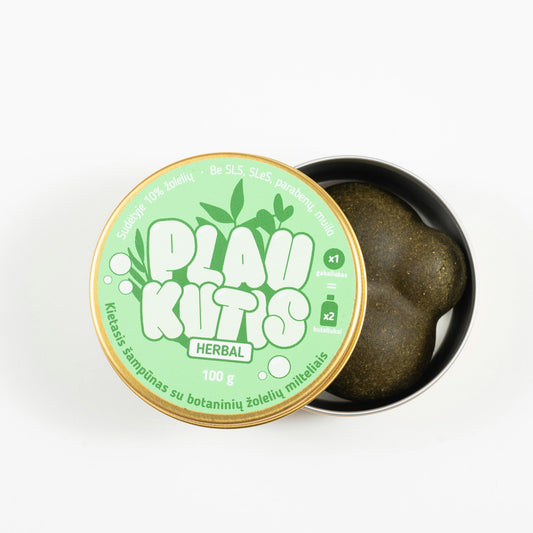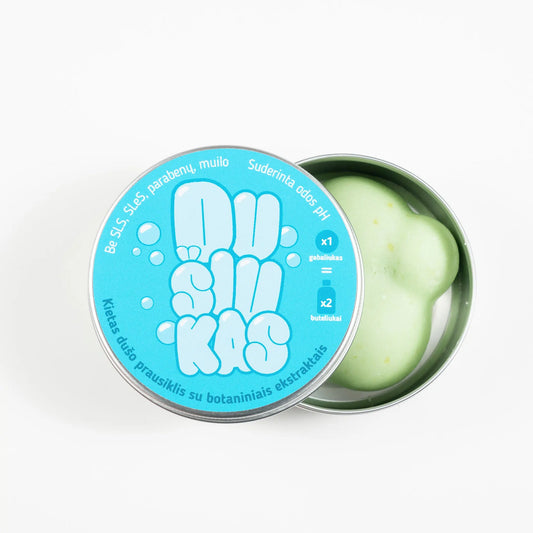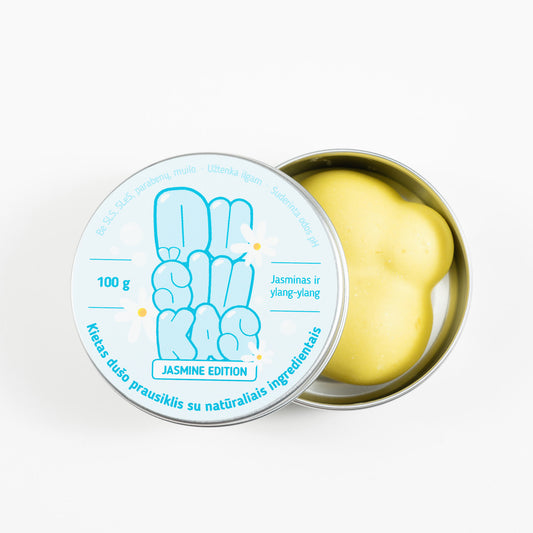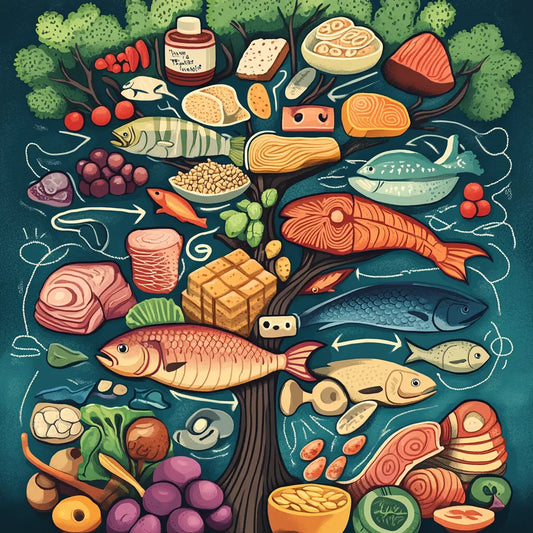The beauty industry is a major contributor to the global waste crisis. A study by Zero Waste Europe found that in 2020 alone, the beauty and personal care sector generated an estimated 142 billion pieces of packaging globally. Much of this packaging, including shampoo bottles and hair care product containers, ends up in landfills, and according to the United Nations , only 9% of plastic is recycled. Shocking fact: plastic can take up to 500 years to decompose, releasing harmful microplastics into the environment.

Plastic waste from hair care products is not only damaging terrestrial ecosystems, but also our oceans. It is estimated that 8 million tons of plastic waste enter the oceans every year, creating a major crisis for marine wildlife. Switching to more sustainable hair care habits is a small but important step towards reducing plastic consumption and promoting environmental well-being.

In response to these challenges, eco-conscious consumers and brands are turning to alternatives such as solid shampoos, refill containers, and low-waste hair care practices. This shift not only benefits the environment, but also offers practical solutions for consumers looking to reduce their ecological footprint.
Solid Shampoos: A Zero-Waste Alternative
One of the most effective strategies for reducing plastic waste in hair care is to switch to solid shampoos. Traditional liquid shampoos are made up of up to 80% water , while solid shampoos are highly concentrated, making them last longer and requiring minimal packaging. In fact, one solid shampoo can last as long as 2-3 bottles of liquid shampoo , depending on usage.
In addition to reducing packaging waste, solid shampoos are ideal for travel due to their compactness and lack of liquid ingredients. They also require fewer resources to produce and transport as they are lighter and take up less space, reducing the overall carbon footprint.

Ecological benefits of solid shampoo:
- Plastic-free packaging : Solid shampoos are typically packaged in biodegradable or recyclable packaging, helping to reduce the 552 million shampoo bottles that are thrown away each year in the US alone.
- Long-lasting : One solid shampoo can last up to 80 washes , which is equivalent to about 2-3 standard bottles of liquid shampoo.
- Water Saving : Since most liquid shampoos are 80% water , switching to solid shampoos helps save water not only in the formula but also in the manufacturing process.

Ethique , a leader in sustainable hair care, has studied how switching to solid shampoos can save around 6 litres of water per bottle produced. In addition, solid shampoos require more than half the energy to produce than liquid shampoo, further reducing the environmental impact.
Additional capacities and recyclable packaging
In addition to solid shampoos, another significant strategy for reducing waste in hair care is to use refillable containers and recyclable packaging. Brands like Plaine Products and The Body Shop offer refill stations or subscription models where customers can return empty containers for refills, reducing the use of single-use plastic.

A 2019 report by Euromonitor International found that 74% of beauty consumers are actively looking for additional options to reduce plastic waste. Additional hair care products allow consumers to reduce their environmental footprint, and many brands even offer discounts for returning containers. Additional containers, especially those made of aluminum or glass, have another advantage – they are durable and can be reused.
It’s also important to understand how to properly recycle hair care packaging. The U.S. Environmental Protection Agency (EPA) reports that 25% of recyclables end up in landfills due to poor recycling practices. Items like pumps, which are often made from mixed materials, can complicate the recycling process. Ensuring that products are completely emptied, cleaned, and properly sorted helps maximize recycling.

How to reduce hair care waste: Practical tips
Switching to a more sustainable hair care routine doesn't have to be complicated. Here are some simple but effective steps you can take:
- Use less product : Many people use too much shampoo or conditioner. Reducing the amount used with each wash not only extends the life of the product, but also reduces waste.
- Multi-purpose products : Look for hair care products that perform multiple functions, such as 2-in-1 shampoo and conditioner or masks that can be used as conditioners. These products help reduce the amount of containers you use.
- Let your hair dry naturally : By reducing the use of heat tools, you will not only save energy, but also extend the time between washes, reducing the need for additional products.
- Choose low-waste styling tools : Choose tools like bamboo combs or wooden brushes instead of plastic alternatives. These eco-friendly materials are biodegradable and create less waste.
- Make your own hair products : Consider making your own hair products from ingredients like coconut oil , avocado , or apple cider vinegar . This way, you'll reduce packaging waste and have control over what you put in your hair.

Myth busting or interesting facts
- Myth : Solid shampoos don't lather as well as liquid shampoos. Fact : Solid shampoos lather just as effectively as liquid shampoos. In fact, many solid shampoos are free of harsh sulfates, but natural ingredients like coconut oil derivatives still create a rich lather.
- Fun fact : If every household in the US switched to solid shampoo, more than 550 million plastic bottles could be avoided from being disposed of annually.
- Myth : Refills are less convenient than single-use plastic. Fact : Many brands now offer subscription refills, where products are delivered directly to your home, reducing the inconvenience and waste associated with traditional packaging.
- Fun fact : Refillable hair care products can reduce packaging waste by up to 80% compared to disposable alternatives.
- Myth : Sustainable hair care products are always more expensive. Fact : While some organic products have a higher initial price, many, such as solid shampoos, are more concentrated and last longer, providing more value in the long run.

Practical tips or solutions
Here are some effective steps to reduce waste in your hair care routine:
- Start with one product : If switching to a completely organic routine seems daunting, start by changing one product, such as switching from a plastic shampoo bottle to a solid shampoo.
- Try additional products : Look for brands that offer additional container options, such as shampoos, conditioners, or hair masks. Many of these brands offer discounts or incentives for returning containers.
- Reduce packaging waste : Look for brands that use recyclable or biodegradable packaging. Choose glass , aluminum , or compostable materials instead of plastic.
- Make your own products : Try DIY hair masks or conditioners using natural ingredients like honey , banana , or yogurt . Not only do these products reduce packaging waste, they also give you control over what you put in your hair.
- Support sustainable brands : Research and support hair care companies that are committed to reducing waste, using ethically sourced materials, and adhering to transparent manufacturing practices.

FAQ section
1. How do I start reducing waste in my hair care routine?
Start by switching to one low-waste product, such as a solid shampoo bar, and gradually switch to other products as needed.
2. What is the difference between solid and liquid shampoos?
Solid shampoos are concentrated and don't require plastic packaging, making them more environmentally friendly. They also tend to last longer than liquid shampoos.
3. How to ensure that hair care products are properly recycled?
Make sure containers are completely emptied, cleaned and follow local recycling guidelines.
4. Are additional hair care products cost-effective?
Yes, while the initial investment may be higher, the additional products reduce long-term costs and eliminate the need to frequently purchase disposable containers.
5. Are solid shampoos suitable for all hair types?
Yes, there are solid shampoo bars designed for different hair types, including curly, dry, oily, and color-treated hair.

Conclusion: Creating a Greener Hair Care Routine
Reducing waste in your hair care is a simple yet powerful way to contribute to a more sustainable future. By using solid shampoos, refill containers, and eco-friendly habits, you can reduce your environmental impact without compromising on the quality of your hair care. Every small change, like reducing your use of plastic or choosing recyclable packaging, adds up over time and contributes to a healthier planet.
